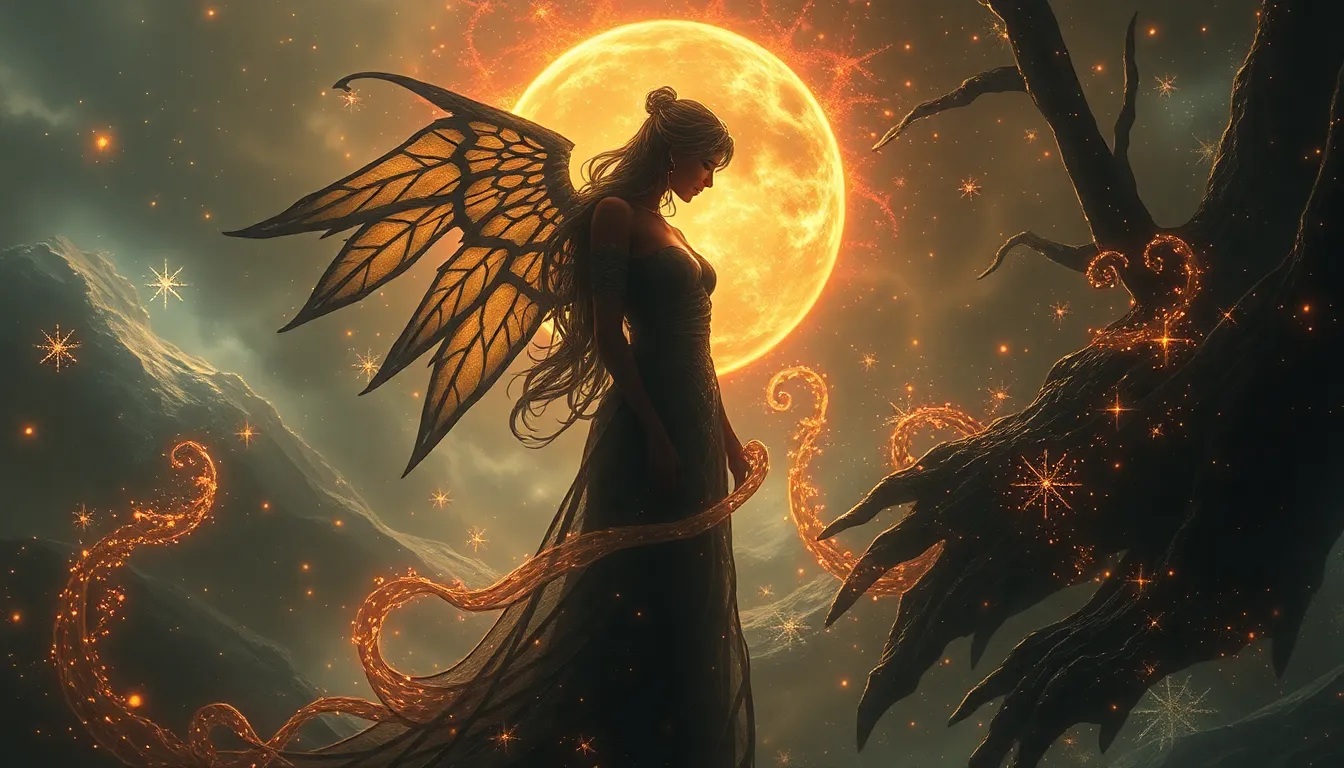Love Beyond Death: Mythical Stories of Undying Affection
I. Introduction
Undying affection in mythology often refers to the deep, transcendent love that persists beyond the physical realm, defying the limitations of mortality. These stories serve as poignant reminders of the connections we forge in life and how they can continue to resonate even after death. Throughout various cultures, love stories encapsulate fundamental human experiences and emotions, making them essential components of cultural narratives.
This article explores the theme of love beyond death through various mythical tales, examining how love transcends time, space, and even mortality itself. We will delve into historical perspectives, cultural motifs, and the psychological implications of these enduring stories.
II. The Concept of Love Beyond Death
The relationship between love and mortality has fascinated humanity for centuries. Historically, love has been viewed as a powerful, transcendent force capable of defying the boundaries of life and death. Myths often depict love as an eternal bond that can endure through challenges, loss, and even the finality of death.
Common motifs in myths related to love and death include:
- The idea of sacrifice for love
- The transformation of lovers into symbols or spirits
- Reunions in the afterlife
III. Mythical Love Stories from Different Cultures
Many cultures have rich narratives that showcase the theme of undying love. Here are a few notable examples:
A. Orpheus and Eurydice: The Power of Music and Loss
The story of Orpheus and Eurydice is one of the most poignant tales from Greek mythology. Orpheus, a gifted musician, descended into the Underworld to retrieve his beloved Eurydice after her untimely death. His music moved Hades, the god of the Underworld, who allowed Eurydice to return with him, on the condition that he would not look back at her until they reached the surface. However, Orpheus, overwhelmed by love and doubt, looked back, resulting in Eurydice being lost to him forever. This story highlights the themes of love, loss, and the consequences of human emotion.
B. Hades and Persephone: Love and the Cycle of Seasons
The tale of Hades and Persephone explains the changing seasons through the lens of love. Hades, the god of the Underworld, fell in love with Persephone, the daughter of Demeter, and took her to his realm. Demeter’s grief for her daughter caused the earth to wither, leading to the creation of winter. Ultimately, a compromise was reached, allowing Persephone to spend part of the year with Hades and part with Demeter, symbolizing the cycle of life and death, love and loss.
C. Shirin and Farhad: A Tale of Sacrifice and Eternal Love
In Persian mythology, the story of Shirin and Farhad embodies undying love marked by sacrifice. Farhad, a sculptor, falls in love with Shirin, a beautiful princess. To win her love, he undertakes an impossible task set by Shirin’s rival, only to face betrayal and tragedy. Farhad’s devotion is so profound that even in death, his love for Shirin remains eternal, illustrating the theme of love’s endurance despite hardship.
IV. Love and Rebirth: The Cycle of Life and Death
Many cultures believe in the concept of reincarnation, where love transcends death through rebirth. This idea suggests that souls are destined to reunite across lifetimes, reflecting cultural beliefs about the enduring nature of love.
Examples of lovers reborn can be found in various mythologies, such as:
- The Indian epic “Mahabharata,” where the souls of lovers are reborn in different forms.
- The Egyptian myth of Isis and Osiris, where love leads to resurrection and eternal life.
These stories often reflect cultural beliefs about love’s power to transcend the physical realm, reinforcing the idea that love is an eternal force.
V. Ghostly Love: The Spirit of Affection
Folklore surrounding ghostly lovers often depicts souls who linger on Earth due to their undying affection. These tales serve as poignant reminders of love that persists even after death.
Some notable case studies include:
- The Lady in White: A common figure in many cultures, believed to be the spirit of a woman mourning lost love.
- Romeo and Juliet: Their tragic love story has inspired countless ghostly retellings, emphasizing their eternal bond.
The psychological implications of these tales suggest that love can provide comfort and a sense of continuity, even after the death of a loved one.
VI. The Role of Fate and Destiny in Mythical Love Stories
Fate often plays a crucial role in shaping love narratives, presenting challenges that lovers must navigate. In many myths, the tension between free will and predestined love creates dramatic conflict.
Examples of love challenges posed by fate include:
- In Greek mythology, the tragic fate of Pyramus and Thisbe, who were destined to be apart due to familial conflict.
- The story of Tristan and Isolde, whose love is thwarted by fate and circumstance, leading to tragedy.
VII. Modern Interpretations of Ancient Love Myths
Modern adaptations of ancient love myths can be found in literature, film, and other forms of media. These reinterpretations resonate with contemporary audiences, highlighting the enduring relevance of these stories.
Some notable adaptations include:
- Film adaptations of “Romeo and Juliet” that explore modern themes of love and conflict.
- Literary retellings of the Orpheus and Eurydice story that focus on the emotional impacts of loss.
These modern interpretations shape our understanding of love and loss, showing that the themes of undying affection remain vital in today’s society.
VIII. The Symbolism of Love in Death Rituals
Love and mourning practices vary across cultures, often reflecting the significance of undying affection for lost loved ones. Rituals that celebrate this love include:
- Memorial services that honor the deceased while celebrating their life and love.
- Customs such as leaving letters or tokens at gravesites, symbolizing continued affection.
The significance of memorials and tributes underscores the belief that love transcends death, providing solace to those grieving.
IX. The Psychological and Emotional Impact of Mythical Love Stories
Mythical love stories resonate deeply with human experiences of love and loss, offering insights into our emotional landscapes. These narratives often serve therapeutic roles, helping individuals process grief and understand their own relationships.
Lessons learned from these stories include:
- The importance of cherishing love while it lasts.
- The understanding that love can endure beyond physical separation.
X. Conclusion
The enduring nature of love beyond death is a theme that transcends cultures and eras. Mythical stories of undying affection remind us of the powerful connections we forge and their ability to persist, even when faced with mortality. Through these narratives, we find comfort, hope, and a deeper understanding of love’s timeless essence.




